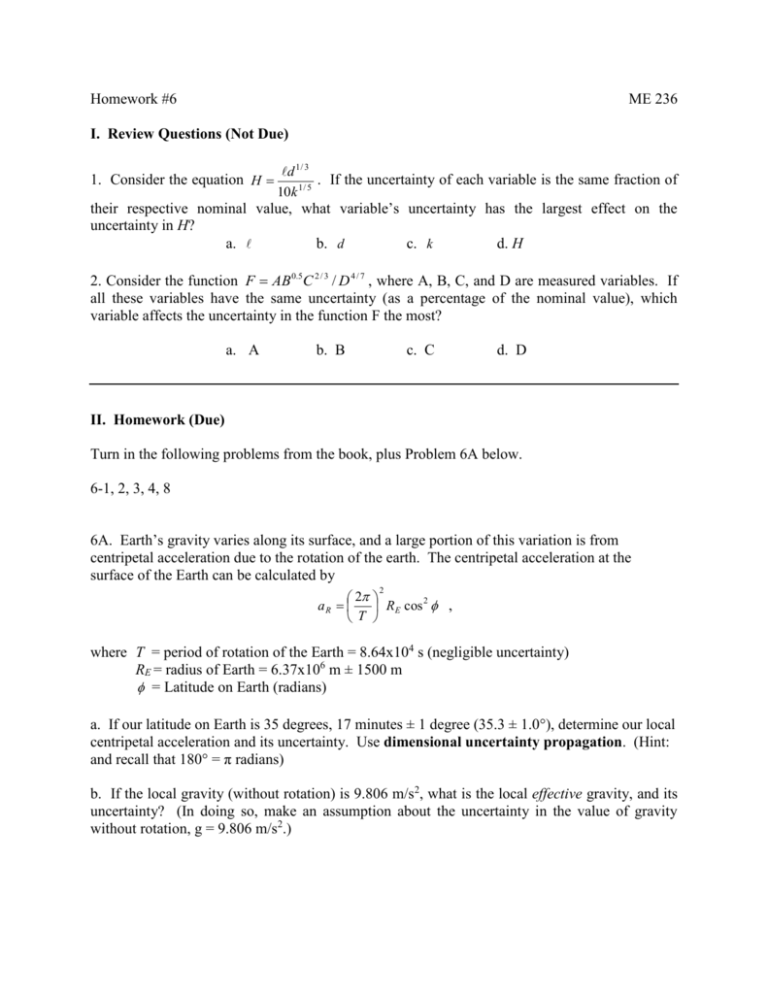Homework #1
advertisement

Homework #6 ME 236 I. Review Questions (Not Due) 1. Consider the equation H d 1 / 3 . If the uncertainty of each variable is the same fraction of 10k 1 / 5 their respective nominal value, what variable’s uncertainty has the largest effect on the uncertainty in H? a. b. d c. k d. H 2. Consider the function F AB 0.5C 2 / 3 / D 4 / 7 , where A, B, C, and D are measured variables. If all these variables have the same uncertainty (as a percentage of the nominal value), which variable affects the uncertainty in the function F the most? a. A b. B c. C d. D II. Homework (Due) Turn in the following problems from the book, plus Problem 6A below. 6-1, 2, 3, 4, 8 6A. Earth’s gravity varies along its surface, and a large portion of this variation is from centripetal acceleration due to the rotation of the earth. The centripetal acceleration at the surface of the Earth can be calculated by 2 2 2 aR RE cos , T where T = period of rotation of the Earth = 8.64x104 s (negligible uncertainty) RE = radius of Earth = 6.37x106 m ± 1500 m = Latitude on Earth (radians) a. If our latitude on Earth is 35 degrees, 17 minutes ± 1 degree (35.3 ± 1.0°), determine our local centripetal acceleration and its uncertainty. Use dimensional uncertainty propagation. (Hint: and recall that 180° = π radians) b. If the local gravity (without rotation) is 9.806 m/s2, what is the local effective gravity, and its uncertainty? (In doing so, make an assumption about the uncertainty in the value of gravity without rotation, g = 9.806 m/s2.)








